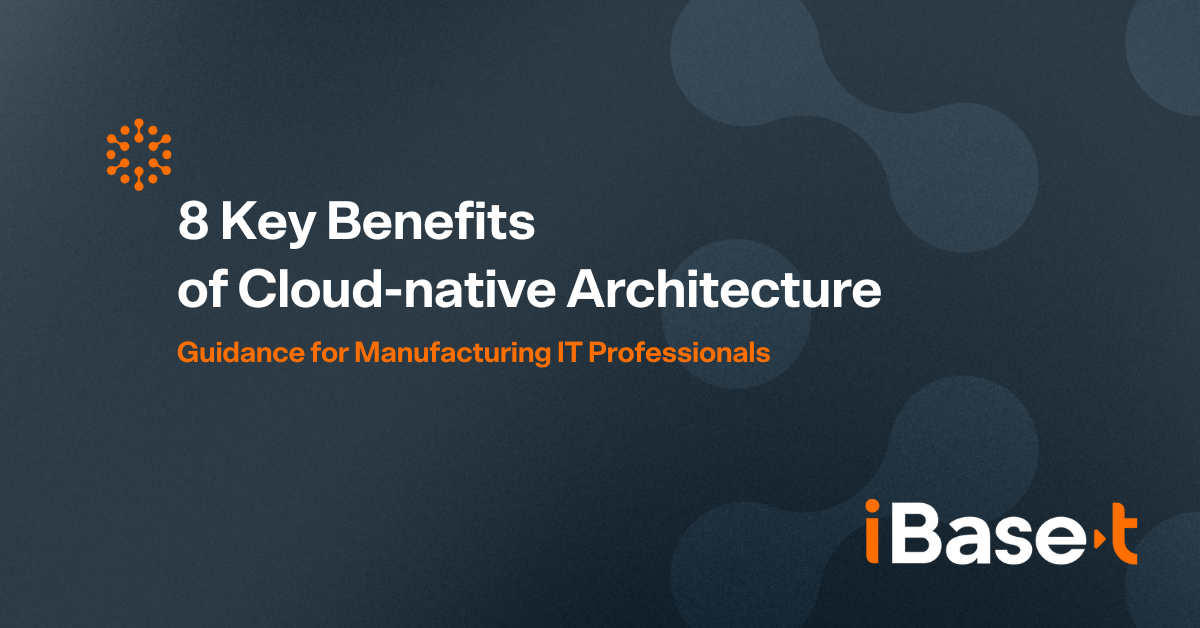MES developers like iBase-t provide and update the software application, while the cloud vendor maintains the hardware, infrastructure, and hosting access. End users can wield the full power of the MES from anywhere with an internet connection without needing to procure and maintain on-premise infrastructure.
Cloud MES software removes the burden of physical infrastructure and extended IT staff. Instead, technology is offloaded to the cloud, making it affordable and practical for most manufacturers.

Leverage the Cloud with Confidence
The potential benefits are great, but there are key factors and business philosophies that every executive should know as they lead a cloud deployment of MES and/or MRO. This eBook discusses some of the most important factors and provides insights into how iBase-t approaches them.
Faster Deployment
Cloud MES solutions deploy quickly, resulting in cost savings and faster time to value compared to an on-premises counterpart.
Scalability
Cloud MES solutions can be scaled quickly since they require no infrastructure investment
Low Risk
Without having to make major investments in hardware and software, manufacturers can deploy in careful, modular stages over the cloud, eliminating most of the risk.
Convert CapEx to OpEx Spending
Subscribing to a cloud MES frees up much-needed capital that manufacturers can use for R&D, production capacity, and other essential activities.
Lightweight
Lower resource demands free up IT teams and require much less oversight after deployment. Upgrades are streamlined and automatic.
Accessibility
Cloud solutions make it possible for users to authenticate and securely access MES software from anywhere with an internet connection.
Cloud-based MES solutions like Solumina are delivered over the cloud by subscription, so deploying to new users or plants is relatively easy. It removes most of the risk as well as initial costs of most deployments. By leveraging the cloud, you can pick and choose the applications and functions as needed. A manufacturer will generally choose on of the following deployment strategies depending on the size and needs of their enterprise:
Deploy the Solution Quickly
Deploy in Stages and Fund as You Go
Major cloud service providers such as Microsoft and Amazon provide a high level of security—often higher than most manufacturers could achieve on their own. Some cloud providers even offer DoD IL5 security as an option.
Solumina MES can be deployed on an AWS Virtual Private Cloud (VPC), which keeps all resources labeled and privately within that network. There is a dedicated virtual channel from the iBase-t corporate ISP to AWS VPC that hosts Solumina instances. As a result, all information stays under customer control. Azure and Gov Cloud deployments are also available.
Remember: cybersecurity also depends on the manufacturer following best practices, not just on the software or the internet. Establish and enforce strong security measures so that only approved personnel have access to your systems.

While cloud MES offers many advantages, some manufacturers may still choose an on-premise solution for reasons of security, control, regulatory compliance, or internet availability. Some organizations land in the middle. Hybrid deployments use elements to let manufacturers maintain their own infrastructure while also using cloud technology. There’s no one right answer but here are a few considerations.






